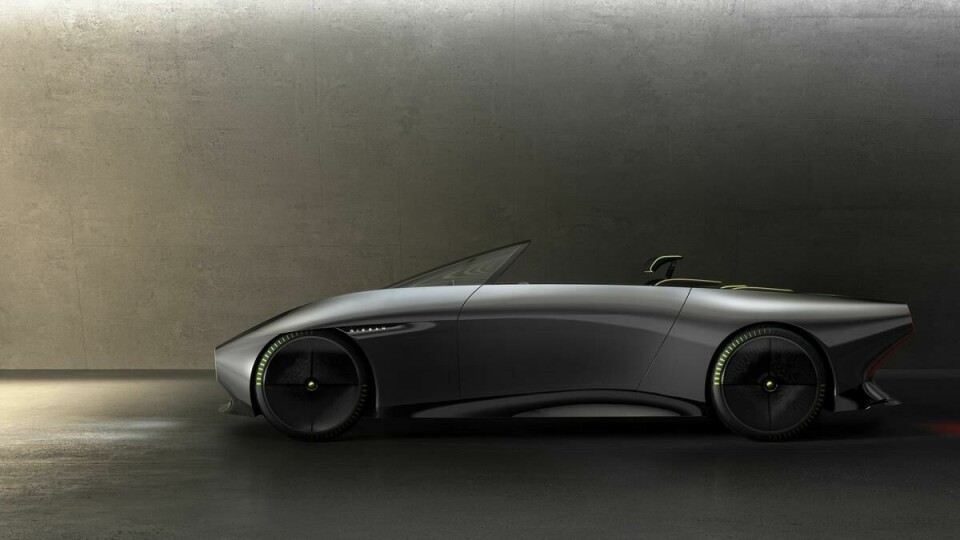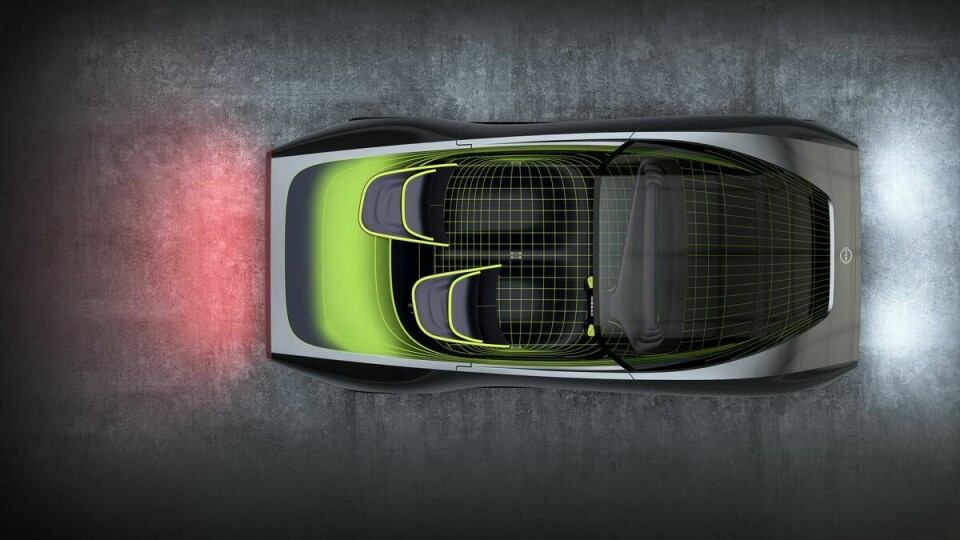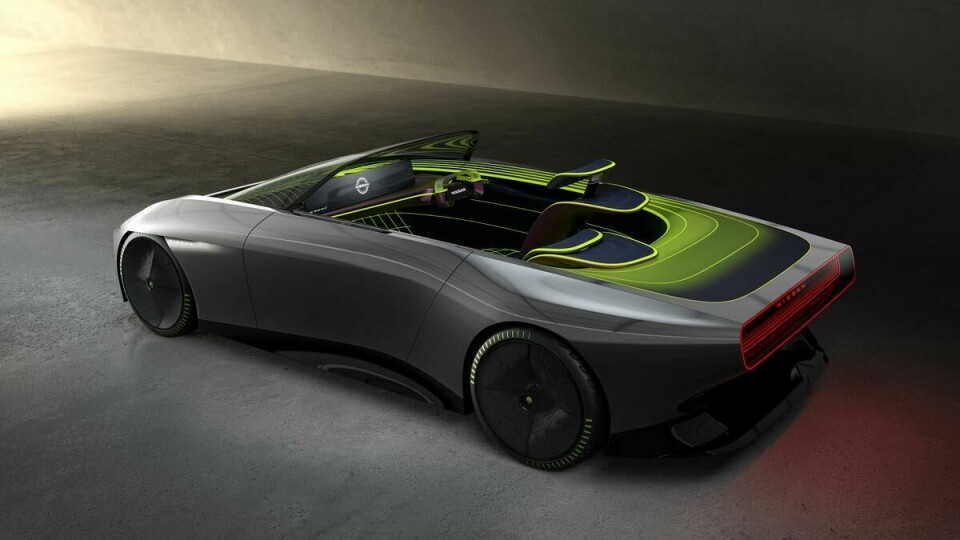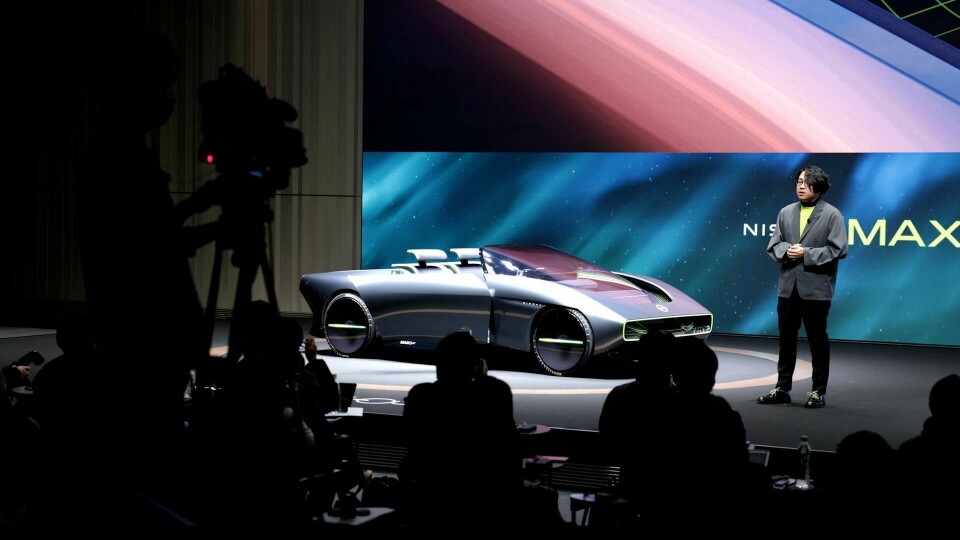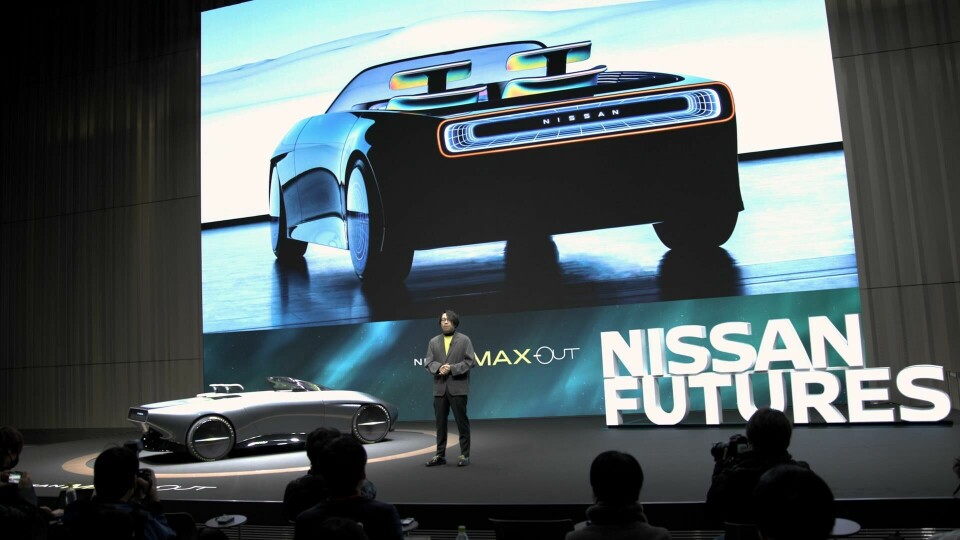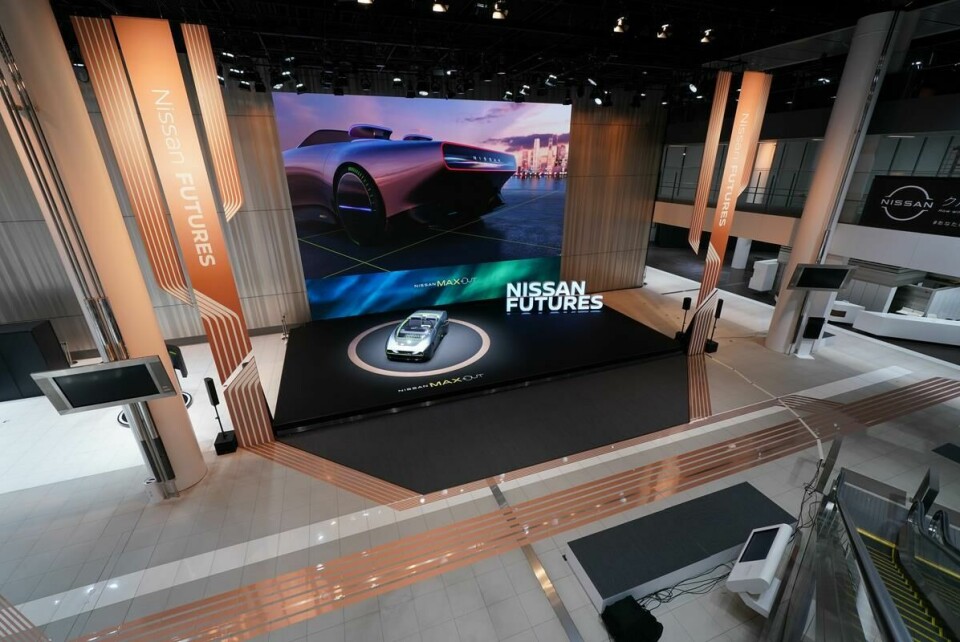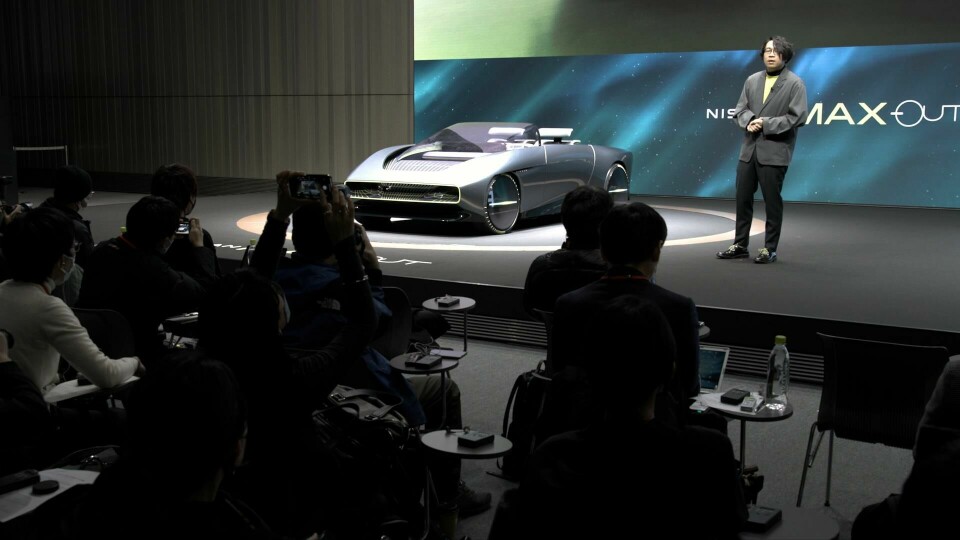
Nissan shows ‘daring’ two-seater concept
The Max-Out concept contrasts classic sports car styling with bleeding-edge futuristic tech. Nissan designer Yu Lihao gives us the lowdown
Nissan has revealed a drop-top concept car as part of its Nissan Futures showcase in Yokohama. The two-seater electric convertible is an unexpected package that digs way back into the brand’s heritage around 1960s sports cars. The classic proportions of this period’s elegant roadsters can be seen in the new Max-Out concept alongside ultra-futuristic digital displays and exterior lighting.
Yu Lihao, associate program design director at Nissan, says the concept was an “entirely new challenge for the brand” and was inspired by the “low gravity, openness, fun to drive, casual attitude and iconic design” of the S310 Datsun Fairlady 1500 in particular.
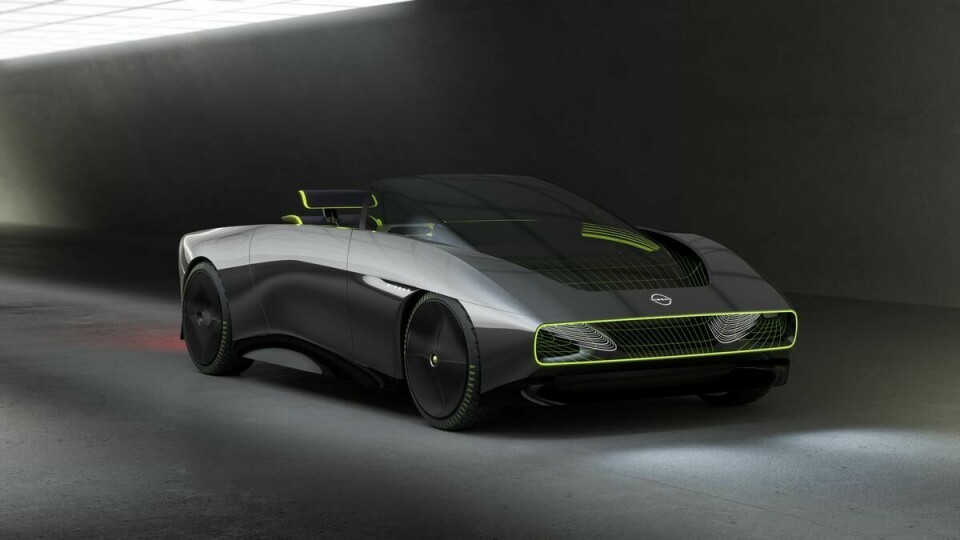
The body surfacing is both smooth and angular depending on where you stand. Seen from above there are hard edges, almost forming the shape of a rectangle, while the sides are more curvaceous. Lihao describes this as a “daring contrast” in form language. “The extremely clean yet dramatically energetic bodyside, sliced off by super-sheer top surfacing, provides an uplifting feeling,” he says, adding that the car looks taut and ready to go even when stationary.
The cowl is incredibly far forward with almost no conventional bonnet to speak of. While this would invariably improve visibility, the design team says it was more about boosting aerodynamic efficiency. “By lowering the cowl and extending the front windshield, we are able to create the air tunnel formed under the hood,” Lihao explains.
The silhouette of the Max-Out is timeless and frankly unfamiliar by today’s norms, and contrasts with the rest of the design. Fully digital lighting at the front and rear – and even within the wheels – are inspired by the neon lights of Shibuya, a vibrant district of Tokyo. The light signature at either end is also entirely new, somehow treading the line between retro and ultra-modern.
“The front end was one of our biggest challenges,” says Lihao. “To think totally out of the box what the future EV front aspect will be, but remaining recognisable and iconic as a Nissan model.” The design team refers to this new look as “Digitalised V-Motion” and is led by a neon green grid-like matrix that flows from the cowl through to the front mask. Within this grid sits a pair of white concentric circles that form the headlights. A similar look is created for the taillights, with shrinking red rings almost giving the appearance of a wormhole.
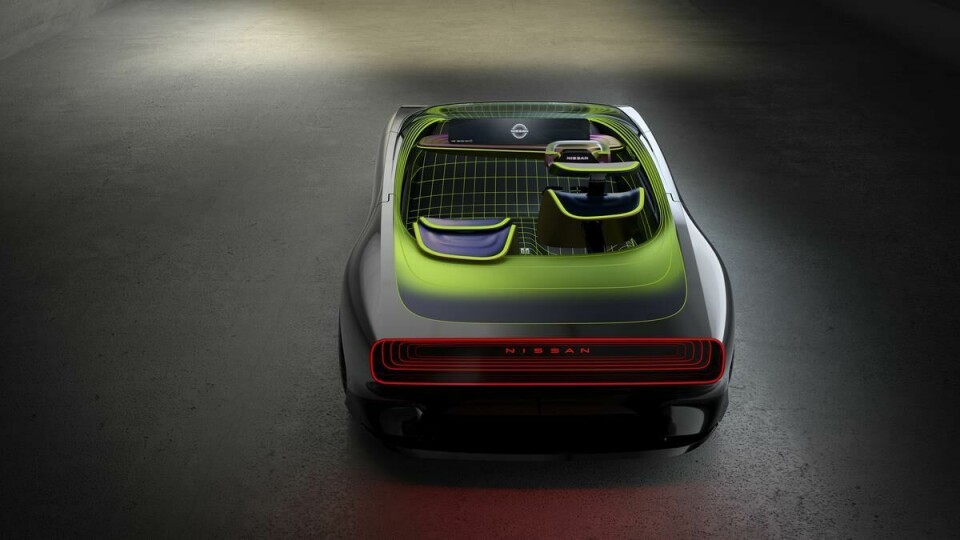
“For the rear end, the wide display on the simple surfacing is not only functional as the rear lamp today, but also a portal towards future experience,” says Lihao. He perhaps hints at a future where vehicles are autonomous and are able to interact with other road users and pedestrians. It might show charging status while plugged in or display messages. None of that is defined just now, but Lihao explains that it serves as “a new user interface to show the status of the car, express your personality and communicate with the surroundings.”
A detail that may go unnoticed unless viewed from the right angle is how the neon grid of lights flows from either end of the car. Rather than featuring defined start and end points, the grid runs seamlessly from the rear deck through the interior, under the instrument panel and cascading over the bonnet. On reflection, this is Lihao’s favourite element of the overall design and he describes it as a “borderless fusion of inside and outside… the digital and the physical.”
There is no set formula for how a concept car works. They might all show and have little-to-no bearing on future production cars. They might preview the next generation of design language and technology. They could introduce new branding. While it is clear this is very much a future-looking exercise, the Max-Out concept may well serve as a blueprint for new electric models in years to come.
“The Max-Out is our bold statement, showing the ambition of Nissan’s design and how we are bravely moving toward the future,” concludes Lihao. Crucially, it also ushers in a new design mentality at Nissan: Shun. In this case the philosophy describes something that “runs with agility yet effortlessly” and the Max-Out concept showcases how this concept will be embodied in future designs.
Nissan, like many others, has clearly recognised an appetite for more conventional styling alongside the push for futuristic powertrains and cockpits, not to mention the revival of iconic nameplates; it was not long ago that it relaunched the ‘Z’ coupe. As Nissan pursues an all-electric line up, it will be interesting to see how the Max-Out influences upcoming models. If they are anything like the Max-Out, consider this writer interested.
